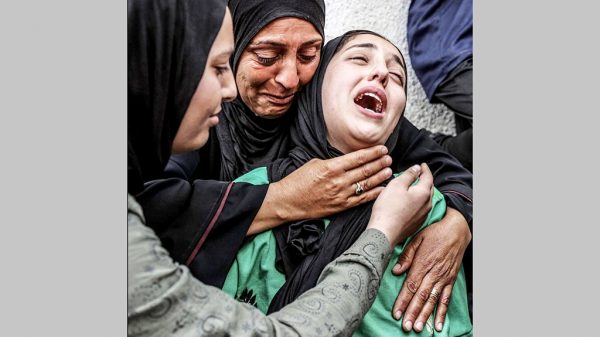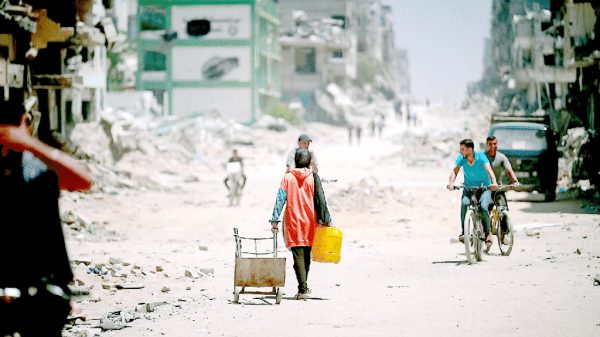Expanding Sustainable Energy Solutions in Post-Covid Era

Dr. Ranjan Roy :
The sustainable development goal (SDG) 7, affordable and clean energy, is only energy-related global agenda, which is fundamental to nearly every major challenge and opportunity the world faces today. Access to energy for all is essential for jobs, security, climate change, food production or increasing incomes. In the context of climate change and COVID-19 outbreak, the significance of this goal has drawn renewed attention to policymakers, since (a) SDG 7 and climate change mitigation (SDG13) are closely related and complementary, and (b) SDG 7 is at the heart of COVID-19 response and recovery.
The impacts of the COVID-19 pandemic on SDGs are well documented. The latest report of the UN shows that this pandemic could derail the achievement of SDGs, including SDG 7, by 2030. The unprecedented health, economic and social disruptions caused by the pandemic highlights the need for reliable energy access for the purpose of securing health facilities, storing vaccines, ensuring clean water, and seizing the benefits of ICTs. It, therefore, intensifies the urgency to expand sustainable energy solutions worldwide.
The COVID-19 pandemic draws a couple of realities. In this time of crisis, affordable and reliable energy is needed more than ever, because of continuing and expanding health care facilities as well as facilitating students learning. This pandemic has revealed the stark worldwide inequalities in access to reliable energy and health care, and has highlighted the need to expand energy access to help populations mitigate the effects of the crisis.
The latest edition of ‘Tracking SDG 7: The Energy Progress Report’ shows promising progress on SDG 7 with some cautions. For instance, buffering COVID-19 losses requires urgent action to ensure sustainable energy as an integral part of COVID-19 response. The access to electricity and improving energy efficiency has globally increased.
South Asia has made excellent progress in access to energy goals over the last few years. The global scenario of renewable energy investments (and project) is invoking a good hope for SDG 7. Globally, renewable energy investments have jumped from just USD 40 billion in 2004 to around USD 300 billion in recent years.
Bangladesh has made good progress in attaining several indicators of SDG 7. The country is moving fast towards ensuring access of 100 per cent households to electricity well ahead of the target time in 2025. Access to electricity increased to 92.23 per cent in 2019 from 31.2 per cent in 2000. Similarly, the level of electricity consumption has significantly increased over the years. However, this country has encountered many challenges like growing fiscal burden. Moreover, Bangladesh’s coverage and access to energy are still behind regional standards (Bangladesh vs. South Asia is equal to 76 percent vs. 85.6 percent in 2016).
Bangladesh has an ambition of becoming a high-income country by 2041. To realise this long-term economic development, the government must invest in developing the quantity as well as quality of energy and power infrastructure. The depletion of ‘domestic gas supply’ and ‘energy subsidy’ are two big challenges. In these contexts, it is hard to design an optimal pathway to foster the sustainability of the energy and power sectors in balancing with the higher economic growth. The government must work on several fronts.
Developing human, organisational (i.e., player of the game) and institutional (i.e., rules of the game) capacities would be a crucial matter to support the clean energy transition, which builds on shifting energy production away from sources that release a lot of greenhouse gases (for instance, fossil fuels) to those that release little to no greenhouse gases (such as hydro, wind and solar energy).
To generate electricity, Bangladesh is primarily dependent on coal and oil. However, realising the environmental damage of using fossil fuels we have to look into other alternatives (renewable energy sources) for energy production. Promoting access to affordable, clean and modern energy, and a wider deployment of energy efficiency and renewable energy technologies and services, organisational and institutional scaffoldings have to be strengthened. Human capital development essentially requires practical training courses and opportunities to experience real operations and maintenance practices.
Investing more in clean energy sources is a key driver of progressing SDG 7, in line with the government’s promise made in the Vision 2021 and COP-INDC (Intended Nationally Determined Contribution). The long-term future depends on clean energy sources. It is well established that the more fossil fuels we burn, the more damage and harm we will do to the planet and the environment.
Of late, a substantial amount of research indicates that recovery investments have to be aligned with SDGs. Given the capital-intensive nature of many clean energy, technologies creates an opportunity for green recovery, which can be an example of how the pandemic could also have a positive impact on reaching SDG 7. However, this country has major constraints for renewable energy expansion: land availability. Likewise, Bangladesh requires formulating technical rules and regulations for grid-connected renewable energy generation.
Incentivising clean energy utilisation has been a widely implemented instrument by governments to support scaled up deployment of renewable energy and energy efficiency technologies and practices. According to the International Energy Agency (IEA), most of the countries have adopted diverse forms of financial incentives to support renewable energy and energy efficiency deployment. Governments might adopt some form of monetary benefit (for example, Tax measures, loan programs, credit enhancements, grants, and performance-based incentives) to support deployment of renewable energy and energy efficiency technologies.
Financial incentives address various barriers (for instance, reduce the burden of high upfront costs) of deploying renewable energy and energy efficiency technologies. However, designing financial incentives should be based on good practices that can be drawn from global experience and can be bespoke to satisfy country-specific goals. Designing financial incentives must align with overall policy goals and based on sound economic, financial, and market analysis. In this regard, engaging private sectors, including finance communities and ensuring a appropriate policy environment, is also significant.
Promoting market-based electricity tariff shifting from administered tariff is a crucial issue for SDG 7. Bangladesh should increase the domestic electricity tariff, anecdotal evidence indicates. Bangladesh Power Development Board should decrease subsidies and increase the electricity bulk rate and electricity tariff to cover the whole supply cost. In setting the most useful tariff, the volume of usage electricity and the equity issue (for low-income households) have to be considered.
Achieving SDG 7 is crucial to attain several other SDGs, including poverty eradication (SDG 1), food security (SDG 2), health (SDG 3), education (SDG 4), gender equality (SDG 5), clean water and sanitation (SDG 6), decent jobs (SDG 8), sustainable cities and communities (SDG 11), and climate change (SDG 13). Accelerating SDG 7 in the COVID-19 era requires a fresh understanding of the perspective, challenges and approaches of clean energy access and its correlation to the many facets of development.
In sum, affordable clean energy access and energy transition by 2030 will largely be contingent on increasing investment in clean energy sources and strengthening governance of the energy transition.
The writer is an Associate Professor in the Department of Agricultural Extension and Information System, Sher-e-Bangla Agricultural University, Dhaka




























Leave a Reply